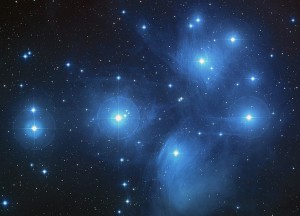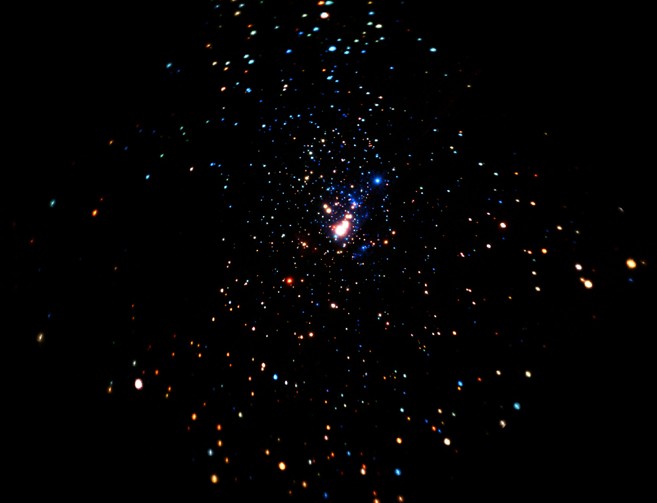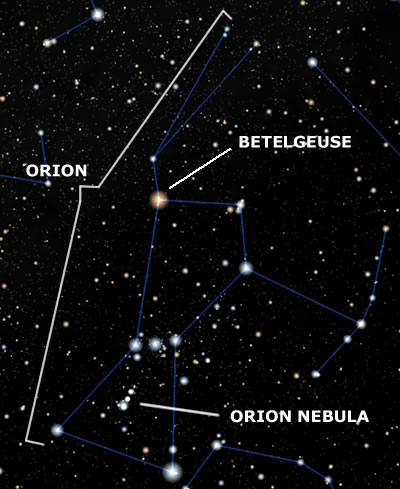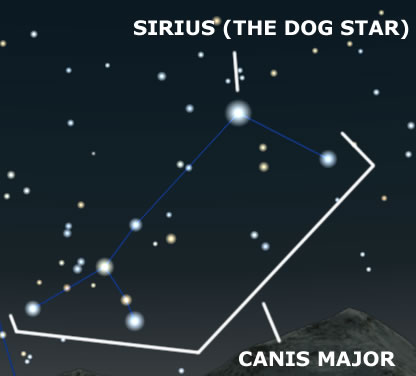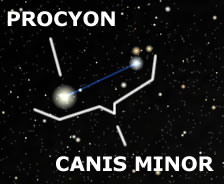Posts Tagged ‘orion nebula’
1st Star Gaze Of The Year
After several months of pants weather in the evenings which stopped me from doing any stargazing, last night finally had a clear enough sky to have a good look again. The moon was ideally positioned as well which made the stars and planets on show very bright. I didn’t get the telescope out this time but used my binoculars instead to have a scan around the Sky.
The most noticeable object in the Sky was the planet Jupiter which was shining very brightly, so I had a good look at it and managed to pick out three of Jupiter’s moons. One was to the right of it and two more underneath it, and I could also just pick out the horizontal storms raging across the planet. As I was using binoculars, the image wasn’t very steady, so I was desperately trying to lean against the shed to steady myself!
Once I had had a good look at Jupiter, I had a look at the Pleiades (also known as ‘The Seven Sisters’) which are one of my favourite things to view in the night sky. They were shining brilliantly via the binoculars although quite dimmed out when looking with the naked eye. It still amazes me how well you can see these stars through a telescope or binoculars as it really brings them to life! The Pleiades are located in the constellation of Taurus and are one of the closest star clusters to Earth. Here is a great photo of them from the NASA website.
The final section of the sky that I had a good look at last night was the Orion Nebula which is situated in the sword of the constellation Orion. As the Nebula is in the middle of the three star sword, it is easily spotted in the sky. You can just make out a blurry area with the naked eye, but using the binoculars as I was, I had a great view of the Nebula. The Nebula is also known as M42 and is 24 light years across with the mass being almost 2000 times that of the Sun. It is also the closest star forming region to the Earth which adds to its significance. I find it amazing to look at this and imagine new stars and worlds being formed in a distant part of the galaxy. Here is a photo of the Orion Nebula from the NASA website.
Here’s hoping for more clear skies over the next few weeks!
Comet Spotting – Attempt #3
Last night we went out again to try and find Comet Pan-Starrs as it was a clear night, but unfortunately, we didn’t manage to see it. There was a band of cloud along the horizon where I am sure the Comet would have been, and it was also very frosty so the atmosphere of the Earth wasn’t as clear as it had been the previous nights when we have been out. It was a bit of a shame, but we at least saw the Comet on our second attempt which was great!
Instead last night, we had a look around at the other objects in the Sky with our binoculars. Jupiter was very bright and you could see a couple of it’s Moon’s shining beside it, and we also had a good look at the Pleiades (also known as the ‘Seven Sisters’ as they are a group of seven stars that shine very brightly. The Pleiades were clear as a bell through the binoculars and were a great site! Finally, we had a go at looking for the Orion Nebula and that was showing really well. You could see a blurry, but large, mass of stars which make up the Nebula in the sword of the Constellation Orion (just south of Orion’s belt). It was a great view!
So whilst we were annoyed we couldn’t see the Comet again, we had a good time looking at some of the other features that make up the night sky!
Orion Nebula, Sirius, Betelgeuse, Procyon and more
After several weeks of bad weather and tiredness due to busy work and a pregnant wife, I have been able to go out and view the Night Sky again.
A lot has changed since I last viewed the stars. Jupiter has now disappeared (from my viewing angle) and Orion has made its way along the night sky and is now settling in the South to South East area. The Plough has also come in to view and can be seen directly from my back garden towards the East.
The first thing I wanted to have a look at was the star Betelgeuse as Professor Brian Cox had said that it could turn into a Red Giant at any time. It would be amazing to see that happen in the sky and would be one of the highlights of my life. Unfortunately, the star was still looking the same through my binoculars and telescope, but I will keep checking it every clear night.
I also wanted to see if I could get a better view of the Orion Nebula which lies amidst the ‘Sword’ in the Orion Constellation. I had a look through my binoculars and telescope and could see a lot more than with the naked eye. What I could see was a blurry amount of light which is quite distinct compared with the rest of the space around it. It was exciting to be able to make this much out but I look forward to maybe getting a better look with a more powerful telescope when I can afford one. It was still a marvel to look at for me anyway.
Whilst I was looking at the Orion Nebula through the telescope, either a Satellite or a Meteor shot across the viewer. I’m not 100% sure what it was but it didn’t have any lights which can sometimes be seen on a satellite so I am leaning towards it being a meteor. It was so far away in the sky that it wouldn’t have been viewable by the naked eye. Perhaps someone can tell me what it was? I spotted it at about 8pm last night (24th March 2011).
There was one star in the sky that my wife and I always wondered what it was as it looked like a Helicopter or an Aeroplane suspended in the sky, with its lights flashing red and blue. After taking a closer look using our equipment and consulting the Internet, we found it to be Sirius (also known as the Dog Star and part of the constellation ‘Canis Major’). It is the brightest star in the sky and the red and blue twinkling that it gives off is due to its light hitting the atmosphere of the Earth and refracting in the gases. We are both glad that we now know what it is!
The final area of the Sky that I had wanted to take a look at was the bright star to the left of Orion. This star is called ‘Procyon’ and forms part of the constellation ‘Canis Minor’. This is also a very bright star, although obviously not as bright as Sirius. I couldn’t see much more detail through the telescope which was a shame, but at least I now know its name.
